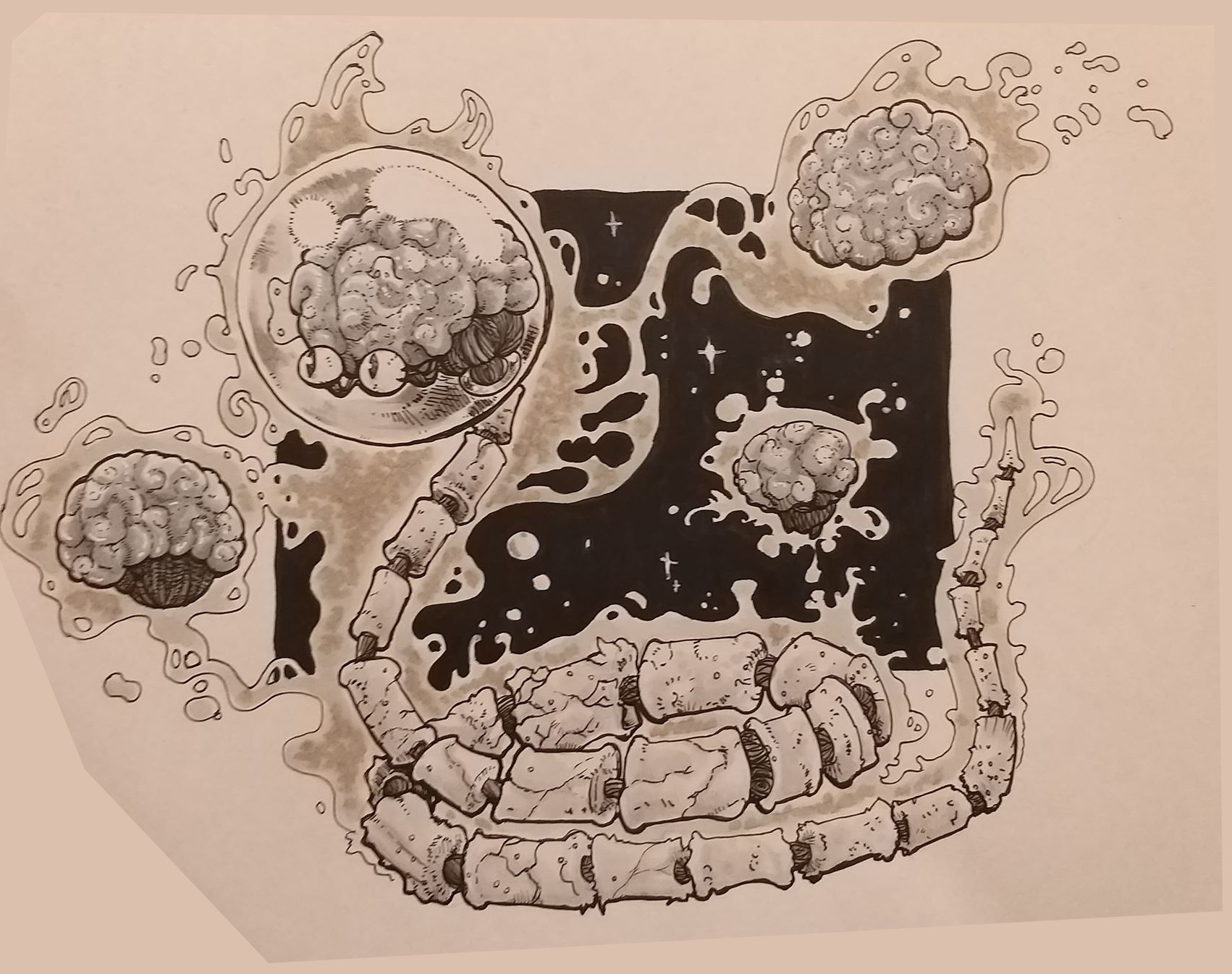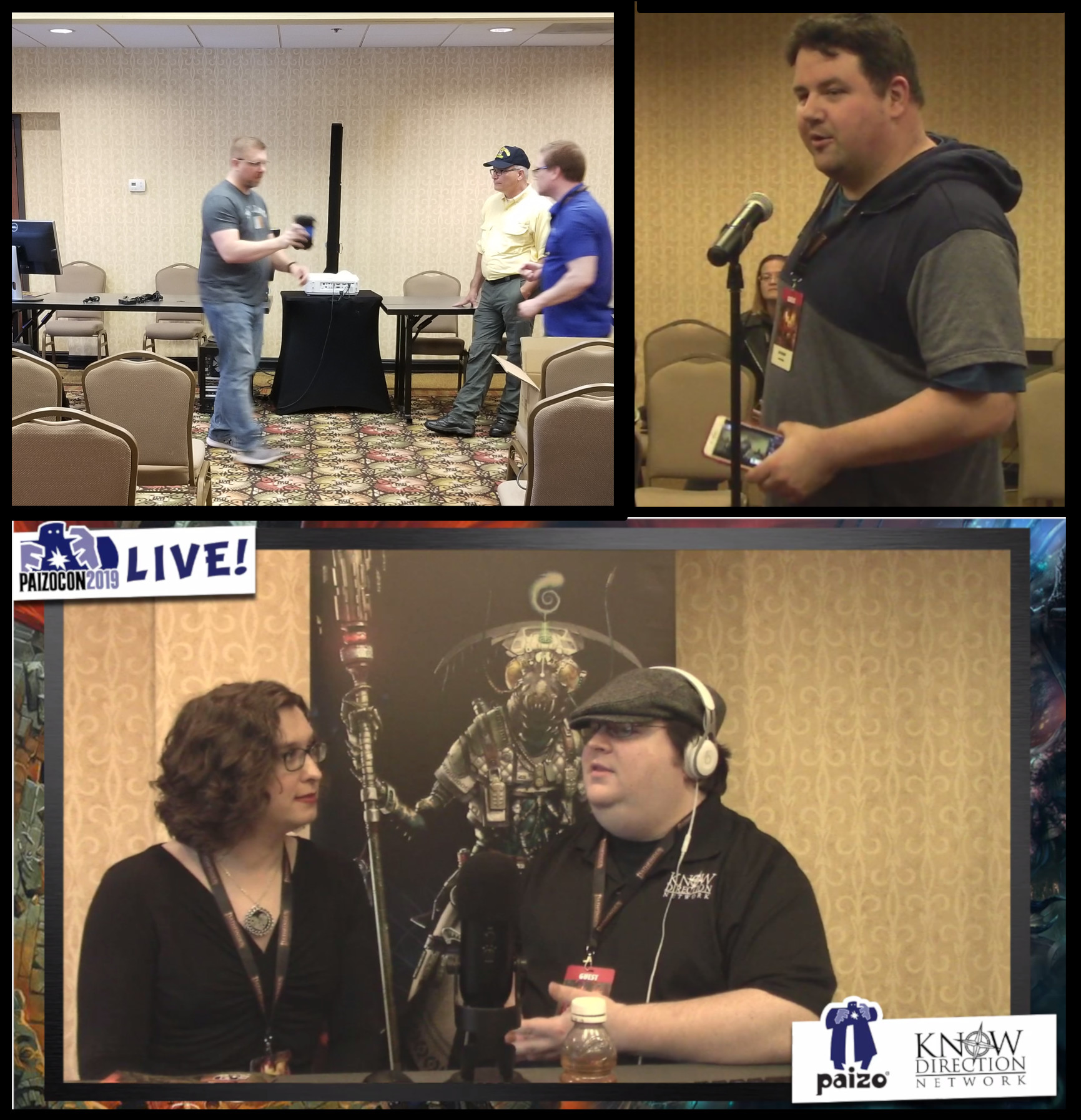I arrived at PaizoCon with no intent to run a game. Within a few hours of breathing in that Pathfinder atmosphere, I realized that this was foolish. Furthermore, I realized I had a table worth of KD staffers on hand and a bunch of digital recorders. The only thing between me and running a game/creating content for the network was a complete lack of adventure or resources. My favourite corner to be backed into.
Perram recently suggested I talk about my improv strategies as a topic on the podcast. However, similar to what I said in the No Prep GMing seminar from last year’s PaizoCon, I told him if I would if I knew how I did it. Mostly, I just follow my instincts as a story teller and manager. However, with my latest experience fresh in my mind, I can offer some advice and recount some of what happened to hopefully help you, my fellow GMs, or at least show a bit of what I’ve previously just talked about.
In Behind The Screens, Ryan Costello offers advice, ideas, and insight for the Pathfinder GM. He deconstructs popular GMing advice to account for different styles and motivations of Game Masters and players. Afterall, everyone games in different ways for different reasons.
Some Prep
You may be shocked to learn that although I brand myself as a zero prep GM, I did spend some time at PaizoCon prepping this adventure. It was not the type of prep I would normally need to do for a regular session of a homebrew, but because I intended to turn this session into multiple Patreon rewards, the prep had a purpose. Beyond those ulterior motives, however, the prep I did was helpful in running a smooth game, although it wasn’t always standard fare for my game sessions.
Monster Design
I wanted the session to be memorable, so I created a new monster for the boss fight. Since I was at a con, I had access to the talented Liz Courts to commission for art. I had a vague idea of the monster I wanted (like a naga but with a spinal column body, brain for a head, and sinuous grey membrane skin) and the abilities it should have (it can invade your body and steal your brain). I developed the visual in tandem with the creature’s abilities, and I can’t separate their concurrent development to tell you which informed what.
During my downtime at the con I skipped over to the Business Center and created a Google Doc in which I fleshed out the creature’s abilities. When I had a clever name for an ability, I used it. When I didn’t, I used a stand in name that was short and self-explanatory. “Shoot brain energy at you” was one of them. I wrote in line with the Paizo style as naturally came to me. It was good enough to use but would need a polish after the fact to get it publishing ready. The goal was to minimize how much polish I would need.
Where I spent the most energy was on the rules. I cross referenced the Monster Statistics by CR table in the Monster Creation rules (yep, used the legacy PRD because it’s still the site I know how to find the information I need the fastest) to make sure my special abilities were balanced to the CR. Not only for my publishing plans but also because I believe a well balanced monster is important for the fun of an encounter.
In my design, I realized my monster had familiar type companions, caled brain children, that needed rules of their own. I whipped up a unique ability for them and a couple of abilities for my main monster that tied into them.
I didn’t have time to create two new monsters entirely from scratch so I found monsters with comparable CR and body types (snake-like caster for the main bad, and flying nuisance for the familiar). I ended up filing the cereal numbers off the lunar naga and replacing the melee attack and spells with the special abilities I’d created. Likewise, the familiar were styrges that lost their attack ability and gained a unique ability. These will be updated before they see print but they were close enough to what I needed to work in a pinch.
NPCs
In addition to the main boss fight, I had a couple of encounters in mind. One (that got cut from the adventure for time) used a monster straight out of the Bestiary. One involved goblins and a horse. I could have used vanilla goblins for that encounter, but PaizoCon afforded me access to fully unlocked HeroLab. It took only a few minutes to stat up a goblin kineticist, some low level goblin brawlers, and a couple of goblin zombies. The zombies were a last minute replacement for two more brawlers when I started designing the kineticist and found an element that granted a negative energy blast.
PC
Around 7:00am Monday morning, I had reason to believe Perram wouldn’t have time to create a 4th level PC for the game. Again using the PRD, I found the 4th level wizard from the NPC Codex and printed them out. When it turned out that yep, Perram had a character, I had one for him ready to go.
No Prep
The rest of the adventure technically falls under No Prep. This is also misleading because although I didn’t write any of these details down or researching them, I spent a fair amount of time at the con thinking about them. Therefore, these weren’t the results of no prep, just mental prep.
Locations
I had no maps, and no details written down about any of the three locations in the adventure.
I had a name in mind for an intriguing set piece that would kick off the adventure, the Wind Swept Library. This library, building and all, would randomly appear in a field, announced only by leather bookmarks blowing in the wind an hour before its arrival. The exact layout or contents of the library were not decided and only existed as I drew maps at the start of the session. This is an area I plan to flesh out a great deal before publishing, but for now the above details are all it needed for the adventure to run as I anticipated.
The second location was a pretty standard cave that housed the goblins. I knew it’s location relative to the library. That’s all I needed. I wish I’d thought a more clever name for the goblin tribe that lived there.
The final location didn’t end up getting used and the boss fight was moved due to time running out. I knew there would be one encounter, something I came up with years ago but had yet to use, before the boss fight. The dungeon was a linear set of rooms with little thought put into the ecology of the location. This would also need to be fleshed out to be published but served its purpose should it have shown up in the session.
Subsystem
There was a subtle timing mechanic running in the background of the first half of the adventure that informed how many familiars the boss would have in the final encounter. It ultimately came down to a few specific choices, and paying attention to decisions the players made in the name of saving time.
Running with It
I’ve informally surveyed my players in the game about how it went and based on the feedback am confident I wasn’t the only one having fun. Vanessa in particular had nice things to say about my improv skills, energy, and creativity. The session will release to Patreon soon, and probably on the main site about a month later. I look forward to hearing feedback from listeners once they’ve had a chance to hear it. For now, I hope I’ve outlined my process in a way that you find helpful, my fellow GMs.





